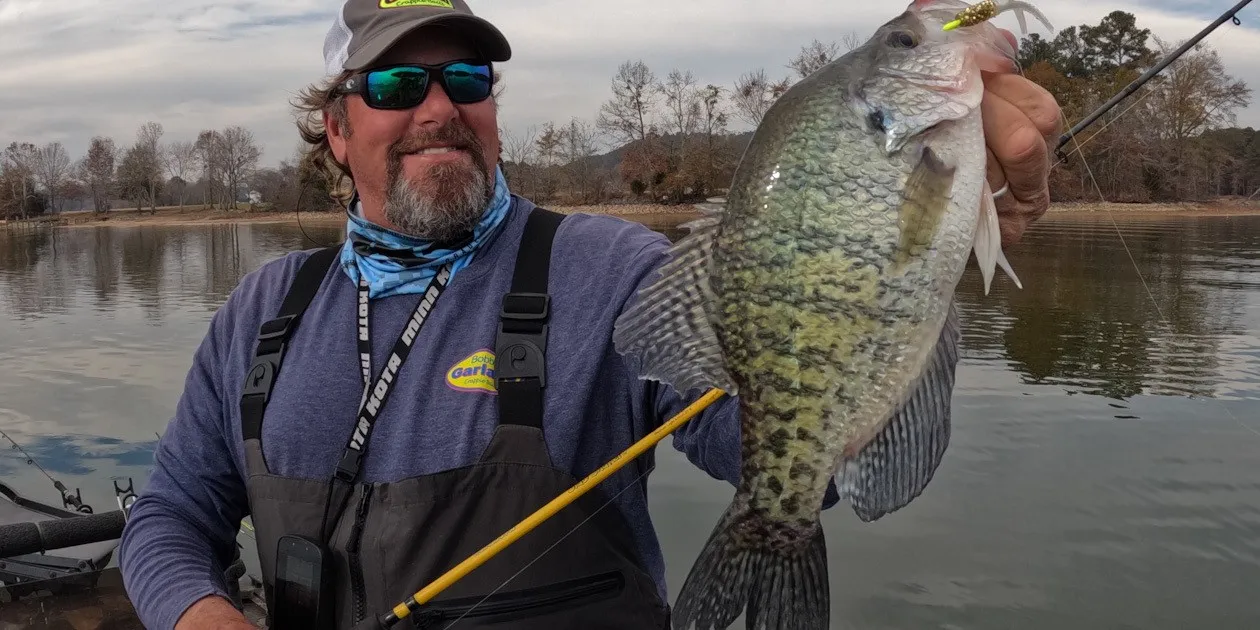Crappie fishing doesn’t hibernate when winter sets in; it transforms. Adjusting your approach to the season can make winter an exceptional time to catch crappie, offering ample opportunities for good numbers and sizeable catches. Let’s explore some practical considerations and strategies tailored to maximize your success in winter crappie fishing.
Temperature Tactics: Seeking the Sweet Spots
In the chill of winter, subtle temperature variations in the water can make a significant difference. Areas with water just a couple of degrees warmer than their surroundings become hotspots for crappie activity. Modern boat electronics equipped with temperature gauges can pinpoint these areas. For those without high-tech tools, factors like sun exposure, shallow flats, stained water, riprap banks, and southern exposures can serve as indicators of potentially warmer waters.
Flowing creeks and river inlets, especially after a warm rain, are reliable sources of slightly warmer water during winter. Power plant warm-water discharges create substantial hotspots, often overlooked by anglers who limit themselves to the immediate outflow.

Ideal Timing: Afternoon Advantage
While the best time to fish is whenever you can, winter afternoons tend to outshine mornings. As the day progresses, water temperatures rise, making late afternoons the prime window for active crappie. Even as the air cools towards evening, water temperatures remain relatively warmer, sustaining fish activity. During warming trends, consecutive days typically improve fishing conditions, with the third day often resembling spring-like behavior from baitfish and crappie moving towards shallower waters.
Changing Landscape: Adapting to Winter Conditions
Winter introduces rapid changes, and crappie behavior responds accordingly. Accessible areas with varying depths become key targets as baitfish and crappie transition between shallower and deeper waters in response to temperature shifts. Flats leading to well-defined channels, points connecting shallow cover with channels, underwater roadbeds, and ridges are prime locations often overlooked by anglers.
Bridges with causeways over major creeks or lakes offer diverse habitats, with riprap along the causeway providing shallow cover, and the channel underneath serving as a transition zone.
Shad presence plays a crucial role in guiding crappie locations during winter. Abundant shad on a flat can attract crappie even without additional cover. Shad also offer insights into the preferred depth range, helping anglers position their presentations effectively.

Winter Tactics: Fine-Tuning Your Approach
Crappie expert Lee Pitts recommends the float & fly technique during winter. This method allows for slow and subtle presentations to suspended crappie in cold creeks. Floats enhance bank fishing by slowing jig presentations, maintaining the bait at a specific depth. Both set floats and slip floats offer versatility, with set floats providing simplicity and control, while slip floats allow for deeper exploration.
Boat anglers can embrace long-line trolling with baits like Bobby Garland Hyper Grub or Stroll’R. This approach covers water efficiently, helping locate fish and control depth. Adjusting colors and depths, based on jighead weight and line length, can trigger crappie bites. Live sonar-equipped boats have an advantage during winter, enabling the search for roamers or schools. Minimizing rod movements becomes crucial in cold water, aligning with the natural slowdown in baitfish activity.
Winter crappie fishing presents unique challenges and rewards. Adapting to temperature nuances, mastering ideal timing, and refining your tactics can turn the colder months into a prime season for crappie success.
Images/Source: Lurenet





